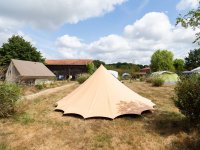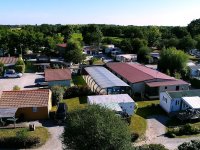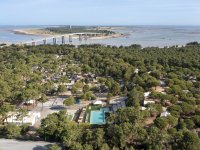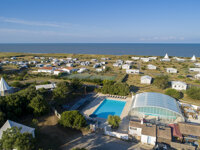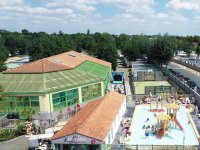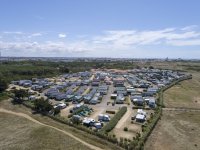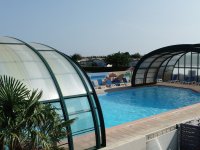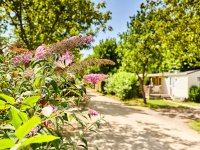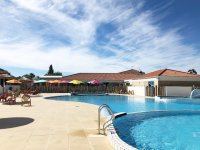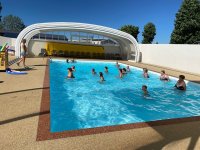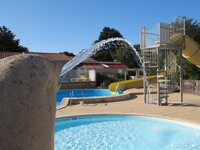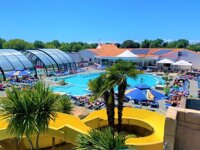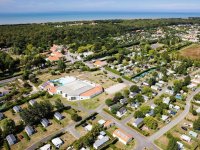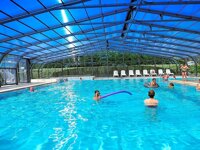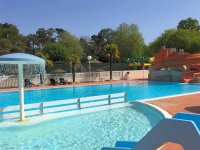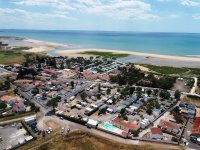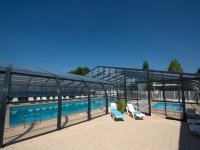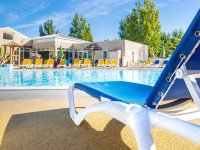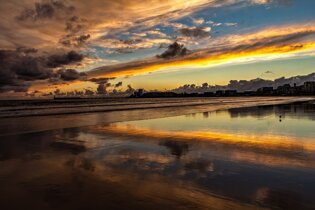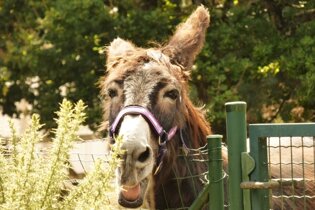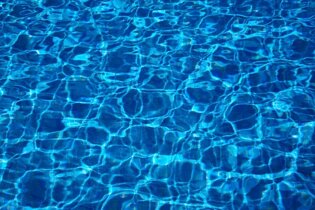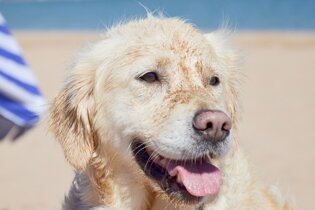Camping in the Vendee
144 campsites in France, Vendée for Swimming Pool
Campsite Listing Google Map
The following consent is required:
Tracking & performance, Targeting & advertising.
Vendée
It’s not only the fine beaches that make this holiday region so appealing – quaint fishing harbours, historic ports and charming towns all create a great holiday atmosphere.

This small but perfectly located region is all about the beach. All 200 km of it. That may sound a little over-simplified, but it is undoubtedly a magnet for lovers of sun, sea and sand. Visitors flock to the region to enjoy the exceptionally mild climate with an enviable sunshine record and famously balmy micro-climate (apparently, there are more sunshine hours here than on the French Rivera); it’s easy to see why this is one of the most popular tourist areas of France. The Vendée has a wealth of sleepy fishing harbours, historic ports and charming towns that all create a great holiday experience. Popular resorts in the Vendée include Les Sablesd’Olonne, La Tranche-sur-Mer, and St Jean-de-Monts.
The Vendée was the centre of the counterrevolutionary movement between 1793 and 1799, and a ‘son et lumière’ held at Le Puy-du-Fou tells the whole story. Les Sables-d’Olonne is its main resort, renowned for its excellent sandy beach. The area between the Vendée and Charente, the Marais Poitevin, is one of the most unusual in France – a vast tract of marshland with a thousand or more tree-lined canals and slow-moving streams.
Camping in the Vendée
The Vendée is a hugely popular region for camping, partly because it’s an easy place to get to from the UK. Campsites in the Vendée are usually of high quality (competition encourages standards to be high) and many have been in business for decades, gradually improving services and facilities. Of course, as is often the rule of thumb, the closer the campsite to the beach, the smaller the pitches are likely to be. That is sometimes the price to pay for convenience. Moreover, campsites near the beach can be more expensive.
And campsites on the beach can be that much more lively in terms of evening entertainment and general hubbub. For this reason, some prefer to enjoy the day on the beach and then retreat to the more secluded campsites slightly inland. But each to their own!

Places of interest
L’Aiguillon-sur-Mer: Famous for its mussels and other shellfish; site of migrating birds between August and November.
Apremont: Pretty village with a Renaissance castle; Vendée’s largest lake with a sandy beach, watersports and boat hire.
Île-d’Yeu: One hour by boat from the coast, a major tourist destination with colourful shops, cafés and restaurants; art galleries and exhibitions; bicycles and cars for hire.
Jard-sur-Mer: Abbey of Lieu-Dieu (financed by Richard the Lionheart); seaside with attractive, colourful houses.
Le Puy-du-Fou: 15/16th-century castle; son-et-lumière production and historical theme park.
Beaches of the Vendée

The Vendée is a great choice for children of all ages. The traditional accessory for every child visiting the Vendée is, without doubt, the bucket and spade - and with good reason. From St. Jean-de-Monts to La Tranche-sur-Mer the coast is virtually unbroken with fragrant pine forests leading down to gently shelving sandy beaches.
These are some of France’s finest beaches, with gently shelving golden sands that are reassuringly safe for toddlers as they paddle and splash in the water. Many beaches offer high season kids’ clubs with organised beach activities as well as watersports on offer like sailing, windsurfing, paddleboards and kayaks. It’s generally easy for teenagers and older children to enjoy a degree of independence in safety.
Île de Noirmoutier: The Le Gois causeway (and a modern bridge) connect this once detached island to the mainland. A handful of scattered villages and miles of often empty beach create a magical environment, very different from the mainstream resorts further south. The Plage des Dames, complete with a boardwalk, wooden pier, soft sand and backed by oak trees, mimosa, eucalyptus and fragrant pine trees is hard to beat.
Les Sables d’Olonne: This is a resort where the beaches are so good they named the town after them. It’s one of the major resorts of the Vendée and has a fine, curved seafront and sandy bay. The marina is always a popular haunt with plenty of flashy boats to gawp at, as well as the usual bustle of a working marina and, naturally, some really good restaurants where you can enjoy fantastically fresh seafood. The 15th century Château St Clair is also a popular excursion as is the zoo with its sanctuary for over forty endangered species.
St-Jean-de-Monts: Though quiet for much of the year, St Jean-de-Monts wakes up with a vengeance during the summer months. This is one of the best-known hotspots, with many excellent family campsites jostling for position along the Cote de Lumière. The vast 8 km long beach is a delight with fine sands and no currents to worry parents of young children. It’s frequented by kite surfers and sand yachts, as well as cyclists and horse riders enjoying the shady pines that fringe the shore.
St-Gilles-Croix-de-Vie: As a change from some of the larger resorts, St Gilles-Croix-de-Vie is an attractive fishing harbour spanning the river Vie. It is home to Beneteau, the world-leading sailing boat manufacturer and it is truly a town of boats, from the brightly painted fishing boats, the little ferries that ply back and forth to the Ile d’Yeu, to the host of small dinghies and sailing boats that bob up and down in the blue waters and whose white sails are sprinkled across the seascape. It’s no surprise the region is known for the Vendée Globe yacht race, one of the most gruelling nautical challenges in the world.
Saint-Hilaire-de-Riez: Not far from its larger neighbour, St Gilles, this pleasant town of small whitewashed houses adorned with jauntily painted shutters is also home to the Atlantic Toboggan waterpark on Merlin-Plage. Here a mind-boggling range of pools awaits, with waterslides, flumes, whirlpools and more. The 250-metre thrills of the twisting Boa and the Kamikaz are inevitable highlights.
The Route du Sel: An excursion with a difference is to follow the Route de Sel (or the Salt Route) through the Marais, inland flat expanses of land reclaimed from the sea. Take to the completely calm waters of the waterways that criss-cross the Sallertaine’s ancient salt marshes and find yourself at eye-level to the surrounding marshland with its windmills and wildlife. A wonderful time to do this is early morning when you might start paddling as the atmospheric morning mists begin to burn off, revealing the magically tranquil landscape around you.
Cuisine of the region

Not known as a viticultural world-beater, the Vendée does have vineyards around Brem-sur-Mer and Mareuil-sur-Lay, producing light, refreshing wines perfect at the end of a long day in the sun. Excellent duck comes from Challans where the duck market was a key part of the local economy. Locally produced meat and poultry include Charolais beef, salt-marsh lamb and foie gras.
The Brioche de Vendée, the soft, slightly sweet bread served at breakfast is a family favourite. Best of all though is the huge variety of seafood available from the simple but highly prized oyster to the elaborate fish dishes that tempt every passer-by. Seafood includes sole sablaise, cooked with lemon, barbecued sardines from Saint Gilles Croix-de-Vie, baked white tuna and mussels from the Baie de l’Aiguillon cooked in white wine.
Samphire: A herb that grows on the edges of the salt marshes.
Mogette: A signature dish of the region, Slow-cooked baby haricot beans, traditionally served with gammon.
Jambon de Vendee: Local raw-cured ham.
